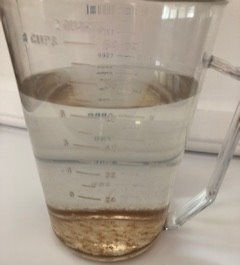EPA AND CDC ARE VERY CLEAR ABOUT LEAD
- Catherine M Macera
- Jul 11, 2019
- 3 min read

We all know how the board truly feels about the people in this Village
"It did show that there was lead in the water in the place they tested." Mayor Brian Lamica said " It was just above what is allowed, its not like its off the charts. It's not like, its a big issue that people really to worry about"
This is a contradiction to both the CDC and EPA
"EPA and the Centers for Disease Control and Prevention (CDC) agree that there is no known safe level of lead in a child's blood. Lead is harmful to health, especially for children. "
https://www.epa.gov/ground-water-and-drinking-water/basic-information-about-lead-drinking-water
"Corrosion is a dissolving or wearing away of metal caused by a chemical reaction between water and your plumbing. A number of factors are involved in the extent to which lead enters the water, including:
the chemistry of the water (acidity and alkalinity) and the types and amounts of minerals in the water, the amount of lead it comes into contact with, the temperature of the water, the amount of wear in the pipes, how long the water stays in pipes, and the presence of protective scales or coatings inside the plumbing materials"
Children
Even low levels of lead in the blood of children can result in:
Reduced growth of the fetus Premature birth hyperactivity Slowed growth Hearing problems Anemia
In rare cases, ingestion of lead can cause seizures, coma and even death.
Pregnant Women
Lead can accumulate in our bodies over time, where it is stored in bones along with calcium. During pregnancy, lead is released from bones as maternal calcium and is used to help form the bones of the fetus. This is particularly true if a woman does not have enough dietary calcium. Lead can also cross the placental barrier exposing the fetus to lead. This can result in serious effects to the mother and her developing fetus, including:
Reduced growth of the fetus Premature birth
Adults
Lead is also harmful to adults. Adults exposed to lead can suffer from:
Cardiovascular effects,
increased blood pressure and incidence of hypertension
Decreased kidney function
Reproductive problems (in both men and women)

Water systems are required to replace lead service lines if a water system cannot meet EPA’s Lead Action Level through optimized corrosion control treatment.
https://www.ecfr.gov/cgi-bin/text-idx?SID=531617f923c3de2cbf5d12ae4663f56d&mc=true&node=sp40.23.141.i&rgn=div6






Comments